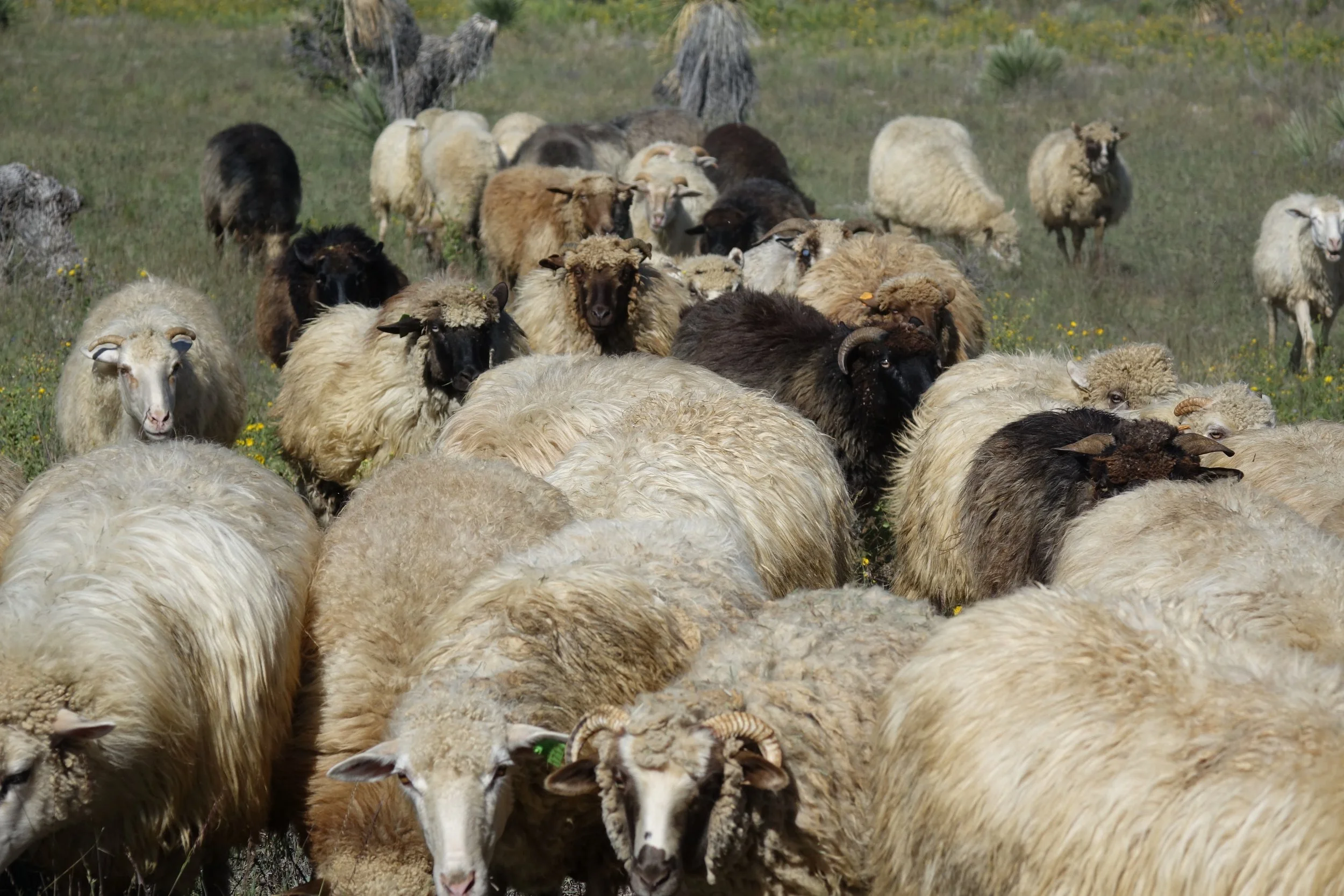We can no longer treat soil like dirt. Instead, we must take a soil-first approach to regenerate landscapes, restore natural cycles, and bring vitality back to ecosystems.

The Churro sheep can help us with this.
Opportunity
Exploring the potential of locally adapted breeds.
Restoring Balance
Churro sheep can help restore balance.
What we generally find is that higher biodiversity supports higher ecosystem functioning
There needs to be a conversation about not only understanding how the climate crisis is going to alter plant communities and animal behavior, but also how that is going to change how we practice restoration. We need to think about how current practices need to adapt and be adjusted to account for a quickly drying climate or more extreme climate events.
Over millenium, people have evolved with their agriculture a strategic and ecologically intelligent use of animals and plants for food. These locally adapted breeds of livestock and plants, referred to as landraces, are important due to their high potential to adapt to specific environmental conditions and the large source of genetic variability that they provide. But the very existence of landraces around the world are threatened by the industrialization of agriculture worldwide.
The opportunity lies in protecting soil using indigenous landrace species, such as the Churro Sheep.
Arid grasslands dominate much of the western United States and the Mexican states of Chihuahua and Durango (including the Churro sheep’s homeland—regions of the Colorado Plateau, the Jornado Plateau, and the Rio Grande basin, which encompasses New Mexico). These areas support large, diverse ecosystems and have the capacity to sequester significant amounts of carbon. Those working to protect rangelands are currently exploring innovative strategies to maintain the health and diversity of these grasslands.
In arid landscapes around the globe, only a few landraces remain viable in their original habitats. These select species, such as the Churro sheep, hold the keys to navigating our increasingly drying and warming climate. The Churro sheep is among the limited landraces developed in the U.S. that still thrive as a regional landrace species. It is these very primitive animals that allow populations worldwide to be versatile, strategic, and ecologically aware when it comes to preserving the biodiversity of their environments.
It is interesting to note that the Churros’ grazing habits resemble those of native ungulates, such as deer and antelope, as they are always on the move and consume a wide variety of plants. They continuously graze and never remain in one spot for long. Their small hooves have less impact on the soil, biocrust, and native plants compared to non-native cattle, goats, and sheep.
Because of their grazing habits and light feet, we consider the Churro the right animal for drying and/or arid landscapes.
It’s all in the soil.
Rangelands are a diverse ecosystem made up of a vast assortment of flora and fauna which primitive species like the Churro sheep utilize in their diets. To support the vast array of plants, the soil in dryland habitats have a layer of crypto-organic soil called Biocrusts. They are dominated by cyanobacteria that binds soil particles, reduces erosion, sequesters carbon, fixes nitrogen, and improves soil fertility. In drought-prone environments, monitoring the presence and integrity of biocrusts helps us understand landscape usage. Biocrusts that protect and enrich the soil will support long-term ecosystem health and economic profitability of livestock production in rangelands. Without these crusts of beneficial organisms, the rangeland plants cannot survive.
Soil as a carbon sink
Soil is a significant carbon sink - globally, approximately 75% of terrestrial carbon has been estimated to be stored in soil, which is up to is three times more than the amount stored in living plants and animals.
If the soil is covered with either humus (organic matter) or Biocrust, it absorbs the carbon from the atmosphere. At the same time, unhealthy soil, which is damaged by overuse and exposed, is a source of emissions of both carbon dioxide and methane. That means that improving the health of soil can play a major role in increasing carbon sequestration and addressing atmospheric carbon.
Biocrusts are fragile
As soils become more arid, they tend to be less able to sequester carbon from the atmosphere, and thus will contribute to climate change. Most domestic livestock used in modern agricultural, have large hooves and a slow way of maneuvering through the environment that causes the break-up of biocrust soils. It takes 10 years for the biocrust to regenerate after disturbance. This disturbance releases CO2 into the environment and destroys the symbiotic relationship biocrusts have with the range plants.
Whether you want to fix or reverse climate change, or do carbon sequestration, or limit the temperatures rising in the world, or resolve water scarcity, the connecting need is the need to fix the soil.

